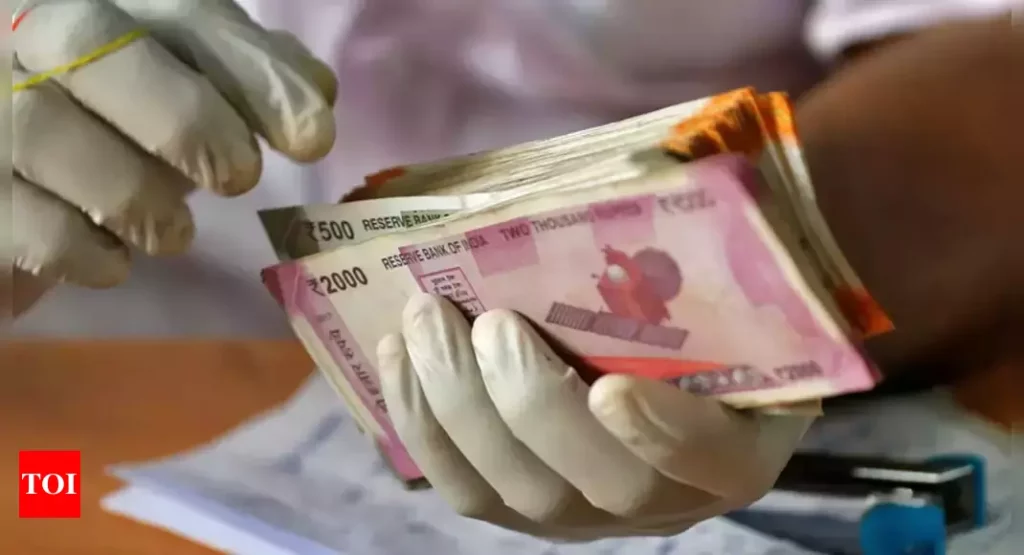
The pressure to repay foreign debt is increasing. In the recently concluded fiscal year 2022-23, 37 percent more debt has to be repaid than in the previous fiscal year. And if we consider the last six years, the payment amount has doubled. It is placing pressure on foreign exchange reserves.
According to the Economic Relations Department (ERD)
A total of $2.74 billion in interest and principal repayments had to be made in the last financial year 2022-23. Bangladesh paid off the debt of 201 million dollars in the fiscal year 2021-22. In other words, the loan repayment has increased by 73 million dollars in one year.
According to a recently prepared finance ministry report, $3.28 billion is to be paid in the fiscal year 2023-24. After six years (FY 2029-30) it will increase to 5.15 billion dollars. The report also said that if Bangladesh does not take any more loans, it will have to pay the interest on the loan till 2062.
Due to the economic crisis, the foreign exchange earnings of the government have decreased a lot. Compared to that, the cost has increased. In this, the current financial balance of the government has become unbalanced. Despite good export conditions, expatriate income fluctuates. A large portion of dollar-denominated private sector debt is no longer being renewed. And at such a time, the dollar cost is increasing even while paying the debt taken by the government. This has reduced the foreign exchange reserves by almost half.
Why is the pressure increasing?
This is related to a decrease in loan concessions with favorable conditions and an increase in high-interest borrowings. The burden of foreign debt repayment is mounting, especially now that the loan payback for the Rooppur nuclear power station has begun. Furthermore, there is the burden of repaying debts from China and India.
According to ERD authorities, the loan payments for the Rooppur power plant cannot be sent to Russia due to the absence of Russian banks from the international SWIFT system. Bangladesh Bank has preserved it as a specialty. So far, $330 million has been deposited over the last year and is being used to service debt.
According to the sources of ERD, in the fiscal year 2012-13, Bangladesh paid a total of 110 million dollars. In the next 10 years i.e. It grew to 201 crore dollars in fiscal year 2021-22. The quantity of debt payback has increased in the recent two to three years, owing mostly to the beginning of China’s debt repayment.
Russia’s debt is now added to this.
And this pressure will increase further. Because, in the current fiscal year, the repayment of the loan installments of the Karnaphuli tunnel project and the Padma Bridge rail connection project of Chittagong will begin.
In this regard, State Minister for Planning Shamsul Alam told Prothom Alo, ‘Looking at the amount of debt repayment, it seems that the pressure is increasing. But still within our means. There will be no problem in repaying the loan. Because the financing we obtained from foreigners contributes to growth. Production is on the rise.
Shamsul Alam believes that the global situation may influence the financing ability of major economies as the cause for the drop in foreign aid. Foreign credit flows do not always move at the same rate and might vary. Exports and expatriate earnings are higher than previously. The currency issue is subsiding, therefore debt repayment will be straightforward.
Minimum commitment within 5 years
Every year development partners including World Bank, Asian Development Bank (ADB), Japan, China, and India pledge new loans. It also waives the loan amount of the previous promise.
According to Economic Relations Department (ERD) sources, development partners including the World Bank, Asian Development Bank (ADB), Japan, China, and India have made the lowest pledges in the previous five years in the just-ended fiscal year. Only $8.8 billion was pledged for the outgoing fiscal year, $137 billion less than the previous year.
An analysis of donor pledges over the past five years shows that pledges of $9.9 billion have been made in the fiscal year 2018-19. In the financial year 2021-22, it increased to 1 thousand 17 million dollars.
Exemption decreased by 1.7 billion dollars
The financial year 2021-22 was a year of great success in receiving foreign aid. A record 1,970 million dollars in foreign aid was released that year. Never before has foreign aid waivers exceeded $1 trillion in a single year.
But in the financial year 2022-23, quite the opposite picture can be seen. In one fell swoop, the foreign aid exemption fell by $1.7 billion. Development partners gave a total of $9.27 billion in the last fiscal year. According to ERD sources, there has been no reduction in foreign aid concessions and pledges in a fiscal year. A few ERD officials raised questions about this in the recently held ERD coordination meeting.
Five years ago
I.e. in the financial year 2018-19, a total of 6.54 billion dollars in foreign aid was waived. In the next four years, it exceeded billions of dollars and reached about 1 billion dollars.
Several ERD officials told Prothom Alo that all development partners have become cautious due to the war in Ukraine. Major economies are under pressure and hesitant to provide aid. Apart from this, as the country’s economy is under pressure, project implementation is also slow. Due to these reasons, concessions and pledges of foreign aid have decreased.
45 thousand crores in the pipeline
About 45 billion dollars are in the pipeline for Bangladesh. About 90 percent of these are loans with easy terms. This money is allocated to Bangladesh. Just want projects for money.